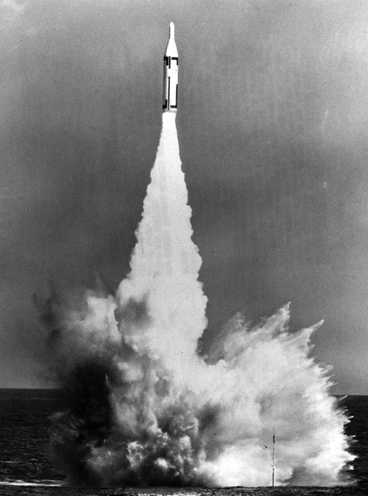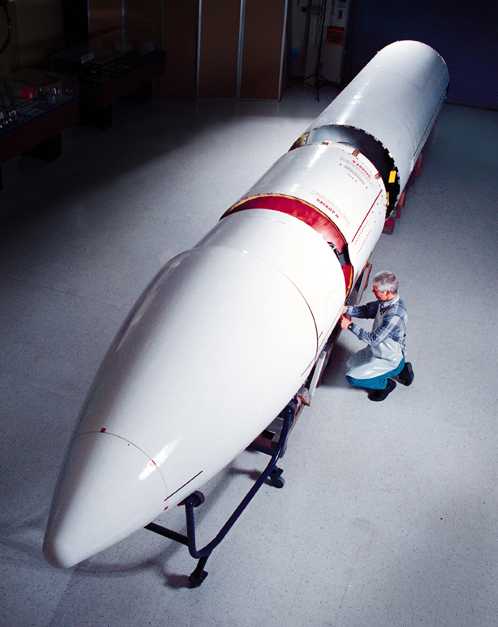

The first Fleet Ballistic Missile (FBM) developed and deployed by the United States was the Polaris A1 missile, named for the North Star. This was a two-stage ballistic missile with a range of 1,200 nautical miles. Like all subsequent USN Strategic Missiles, the A1 was powered by solid fuel rocket motors and guided by a self-contained inertial guidance system independent of external commands or control.
The follow-on Polaris Missiles A2 and A3 had increased range and payload. U.S. deployment of the Polaris missile series ended with the retirement of the A3 in 1979.
The Polaris was launched by the pressure of expanding gas within the launch tube. After gaining a sufficient height above the water's surface, the first stage rocket engine was ignited.
The United Kingdom and the United States signed the Polaris Sales Agreement in 1963. For nearly three decades, the UK used the A3 for its submarine deployed strategic missiles.
| Designation | Polaris UGM-27A, UGM-27B, UGM-27C |
|---|---|
| Ship Class Used On | George Washington SSBN-598 and Ethan Allen SSBN-608 Class Submarines |
| Date In Service | 1960 |
| Weight | 35,000 lbs. (15,876 kg) |
| Dimensions | 54 X 387.5 in (137 X 984 cm) |
| Payload | A3: British Version: Six 150 kt warheads USA Version: Three 200 kt warheads |
| Range | A1: 1,200 nm A2: N/A A3: 2,500 nm |
| Propulsion | Two-stage solid fuel rocket (36,000 kg initial thrust) |
Data from:
- Lockheed-Martin Missile and Space
- "The Naval Institute Guide to World Naval Weapon Systems 1991/92" by Norman Friedman
